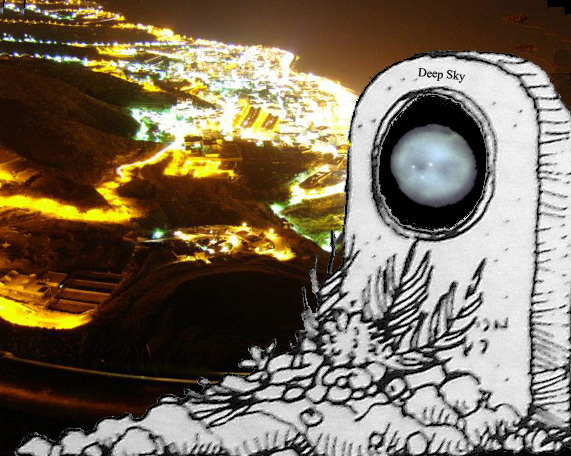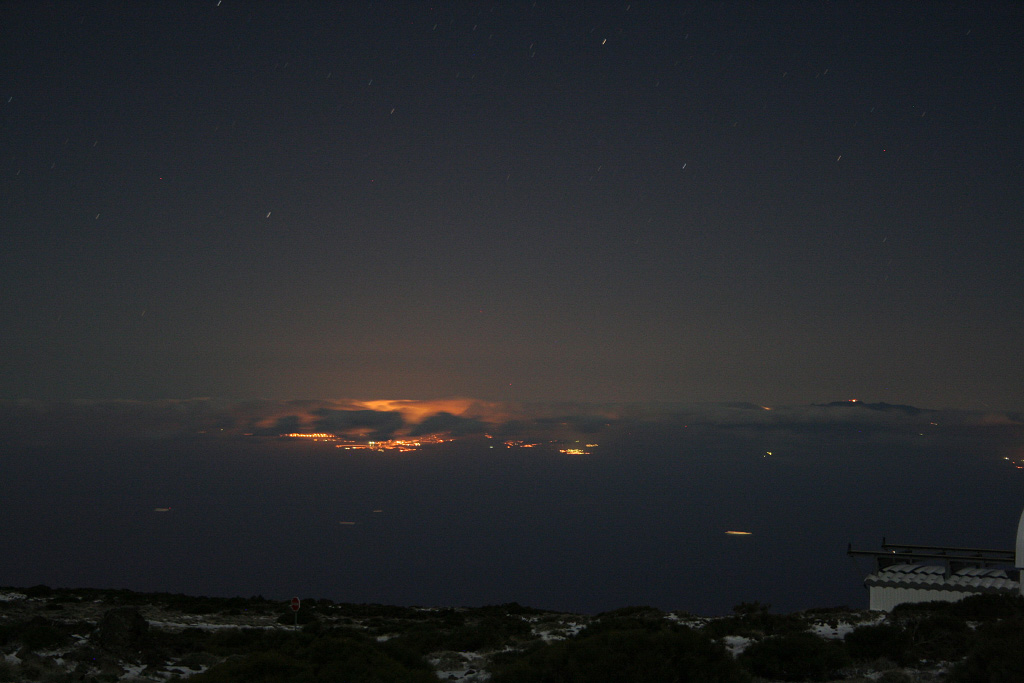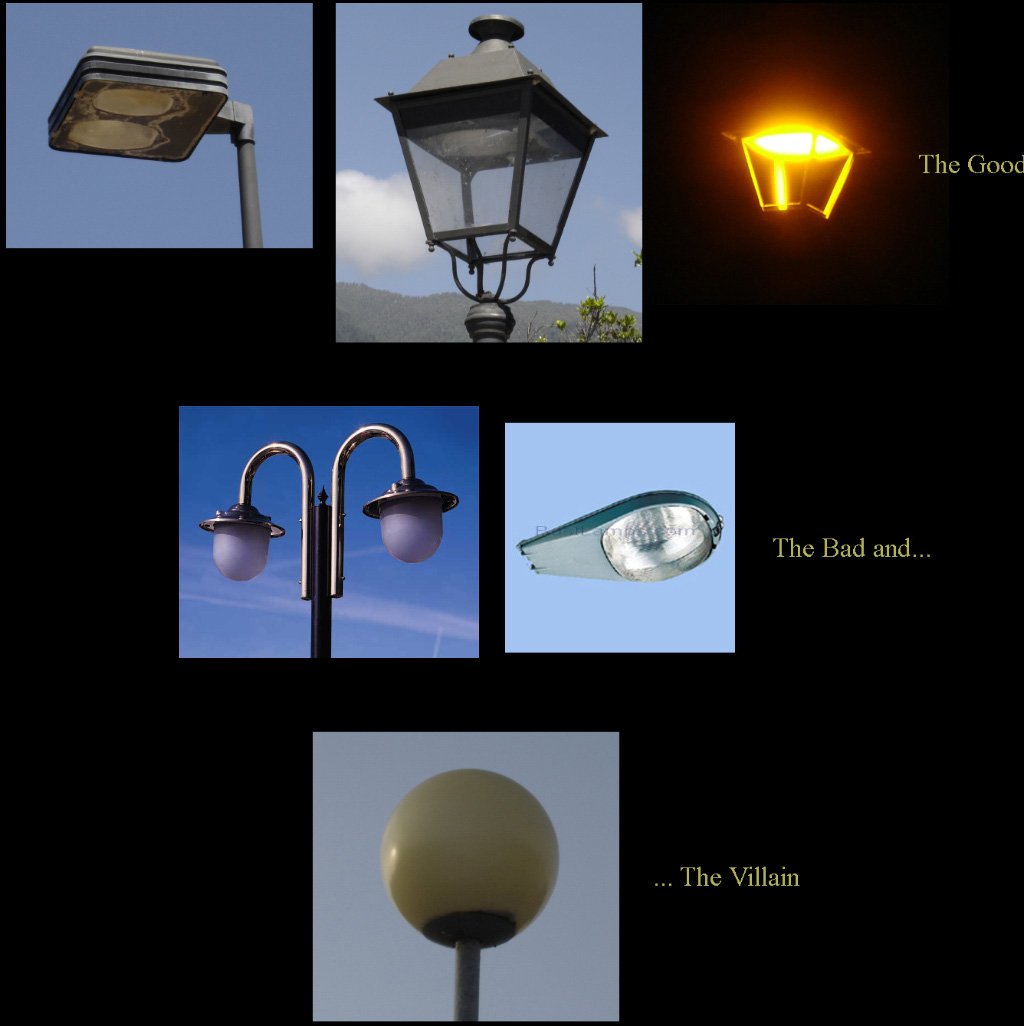
Light Pollution
As any other kind of pollution, light pollution contributes to jeopardize the quality of life.

The sky is part of the natural landscape. If it is unpleasant for us to see a polluted river, the smell of the traffic in the cities, the excess of noise at the airport surroundings, why so few of us are concerned with the excess of light that hides the beauty of the night sky?

Zone of rho Ophiucci captured at Teide Observatory during the WR140 mission. If one continues implementing bad illumination, images such as this one will be impossible in the future.
It is not only the aspects related to amateur astronomy or landscape aesthetics that are in risk! In the scientific field, light pollution is affecting the astronomical observatories of the north hemisphere. In some of them, practices like photometry are already made impossible.

Horizon of Calar Alto observatory
Let's see a practical example of the influence of a polluted sky on the result of a spectrum of the star WR140 acquired on the sky over Lisbon:

The left image is the graphical representation of the spectrum of the right image
The pollution (vertical line in the right image) is due to the Mercury vapour lamps, and interferes with an important zone of the star's spectrum.
Some countries are already taking into account the night sky protection. For instance, La Palma in the Canary Islands, where Roque de los Muchachos Observatory is located, has a night sky protection law. In the images bellow one can see the effects of this law by comparing Gran Canaria, where the law isn't applied, with La Palma.

Gran Canaria as seen from the Teide Observatory

La Palma, in the horizon, as seen from the Teide Observatory
The sky law imposes the use of low-pressure Sodium lamps in the public illumination, embedded in a way that the light is projected exclusively to the bottom. From mid-night on, no other source of illumination is allowed, and the light intensity is reduced to the half. In the night image of La Palma the yellow light of the low-pressure Sodium lamps can be seen to the right, in the zone of San Andrés, Los Sauces and Orotava.

Good, bad and ugly examples of street lamps...

... and respective consequences. Both images were obtained in the same way, with the same setup. Stars are visible over Garafia.
Public illumination is useful for the illumination of routes, streets, roads, during the night period. The street lamps must project the light to the ground, and not to the people's eyes, nor to the sky. The aim of every City Hall manager should be to obtain the maximum of light with the minimum of electricity.
By using good street lamps, the electricity that the bad ones waste by dazzling people and illuminating the sky, would be saved. Science, Economy, fauna and flora, amateur astronomers, lovers, poets and dreamers, voters, and everybody, all of us would benefit from that.